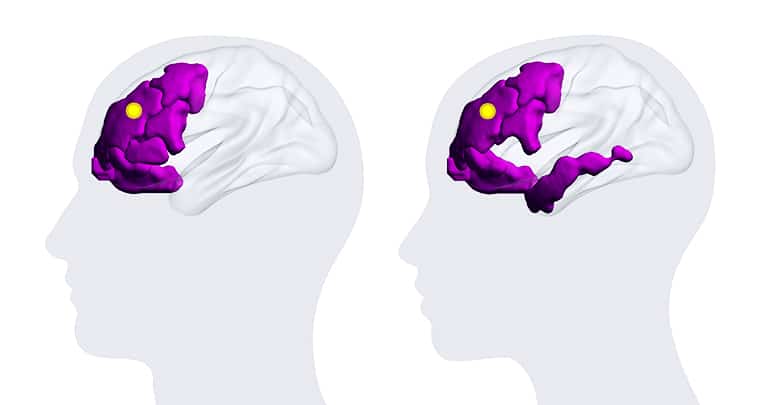Some large-scale patterns in brain activity may vary widely from person to person when certain cognitive systems are activated, research finds. Other cognitive patterns are more similar.
The research focuses on brain activity associated with nine cognitive systems within the brain, each consisting of a network of brain regions linked to certain functions. The auditory system, for example, helps us process sound, whereas the ventral temporal association system is thought to help us recognize objects, faces, colors, and more.
“We’re using computational modeling to investigate the inner workings of the brain,” says Sarah Muldoon, assistant professor of mathematics at the University at Buffalo.
“When one region of the brain is stimulated, what other regions become active, and how do these patterns of synchronization get distributed across cognitive systems?”

To complete the study, researchers mapped how different regions of the brain connect to one another in 30 different people via tracts of tissue called white matter. (The specific connectivity pattern linking different brain regions varies between individuals.)
Next, the scientists converted these maps into computational models of each subject’s brain, and used computers to simulate what would happen when a single region of a person’s brain received stimulation. The researchers then used a mathematical framework, which they developed, to measure how brain activity became synchronized across various cognitive systems in the simulations.
2 main findings
The study had two broad findings. First, that large-scale patterns in brain activity may vary widely from person to person when certain cognitive systems are activated. In contrast, activation of other cognitive systems may result in repeatable patterns across individuals.
To explain further: In computer simulations, the patterns of brain activity that emerged when researchers stimulated some cognitive systems were highly stable across different people. This held true, for example, for the auditory and medial default mode systems: Stimulating one brain region in these systems typically led to similar patterns of brain activity in different people in the simulations, with a similar set of cognitive systems becoming active. For other cognitive systems, such as the ventral temporal association and frontoparietal systems, patterns of brain activity upon stimulation varied a lot between people in computer simulations.
Second, that stimulating two different brain regions in the same cognitive system may result in distinct patterns of large-scale brain activity in the same person—but only for some cognitive systems (such as the auditory system). For other cognitive systems, similar patterns of brain activity may emerge regardless of which brain region you stimulate in that system. This applies to the attention and subcortical systems, for example.
Our dynamic brains
The findings could be useful to cognitive scientists and health care professionals. The study demonstrates, for example, why it may be important for brain stimulation, a disease treatment technique, to be both highly precise in terms of the location stimulated, and personalized for different individuals.
“The brain is very dynamic,” says Kanika Bansal, who completed the work as a joint postdoctoral mathematics researcher and is now a postdoctoral researcher with the US Army Research Laboratory and Columbia University. “Connections between different regions of the brain can change with learning or deteriorate with age or neurological disease. Connectivity also varies between people.
“Our research helps us understand this variability and assess how small changes in organization of the brain can affect large-scale patterns of brain activity related to various cognitive systems.”
The study points to computational modeling as a powerful tool in cognitive science.
“Computational modeling enables us to do experiments that wouldn’t otherwise be possible,” says Muldoon, a faculty member in the computational and data-enabled science and engineering and neuroscience programs in addition to her position in the mathematics department.
“It is simply not feasible to do these kinds of tests on real people so computer simulations allow us to perform virtual experiments instead,” she says.
The study appears in Science Advances. Researchers from the University of Buffalo; ARL; Columbia University; the University of Pennsylvania; Carnegie Mellon University; and the University of California, Santa Barbara contributed to the work. Funding for the study came from the Army Collaborative Technology Alliance.
Source: University at Buffalo



